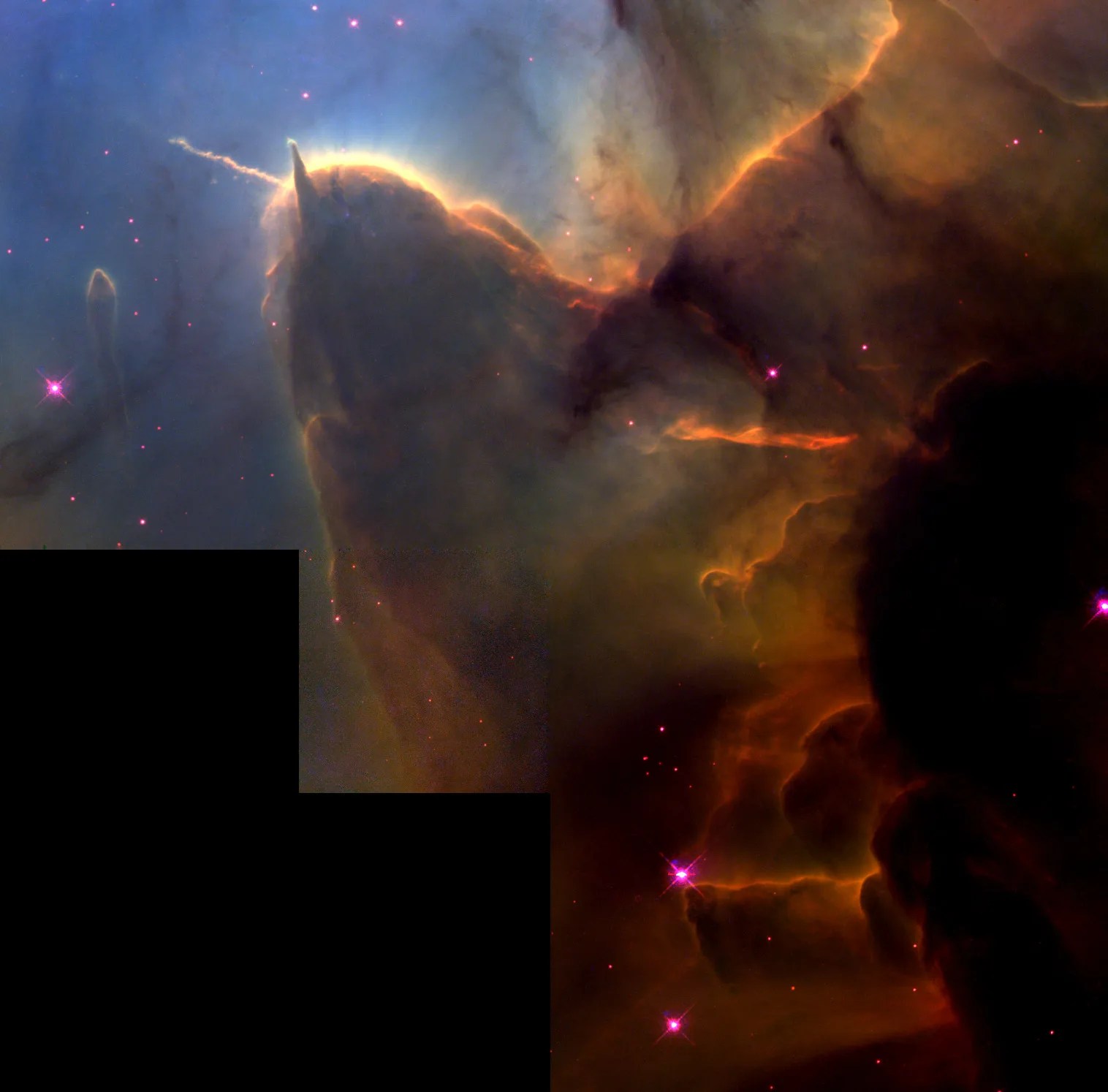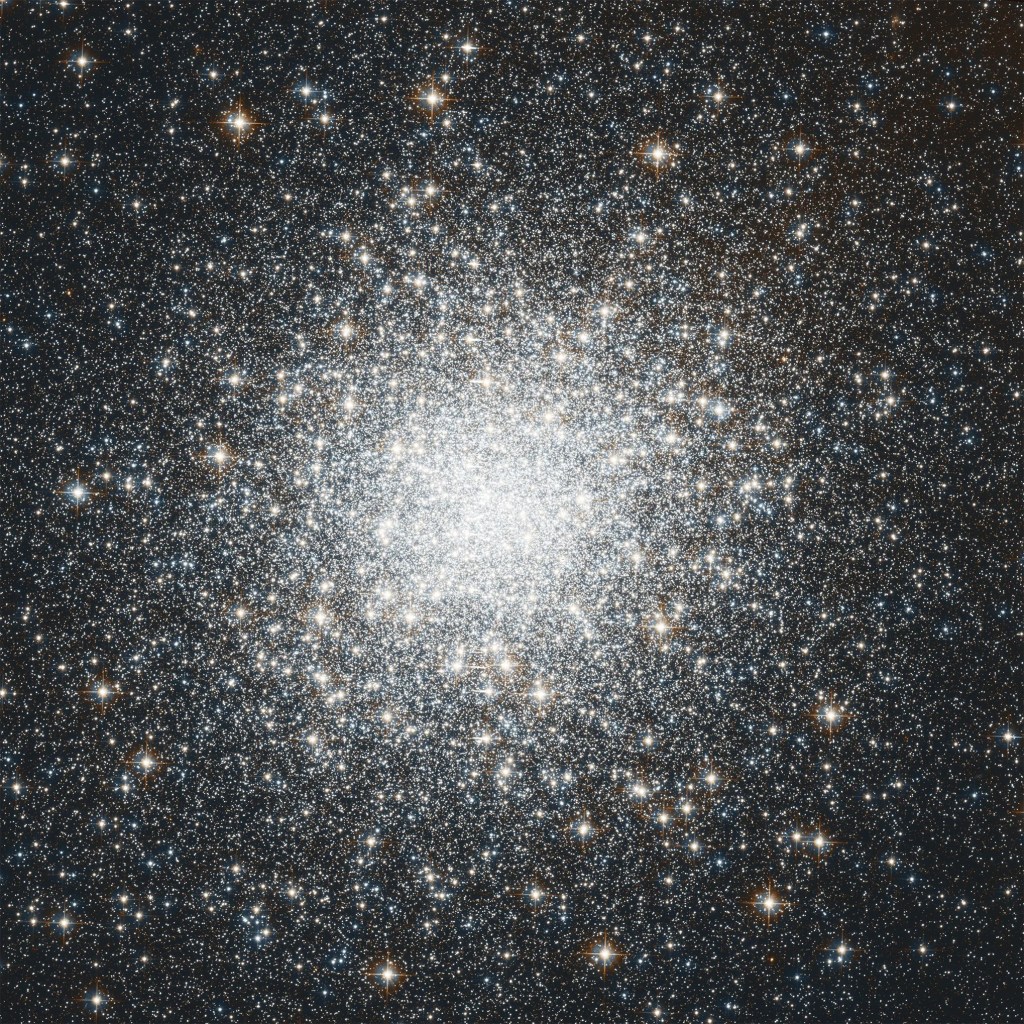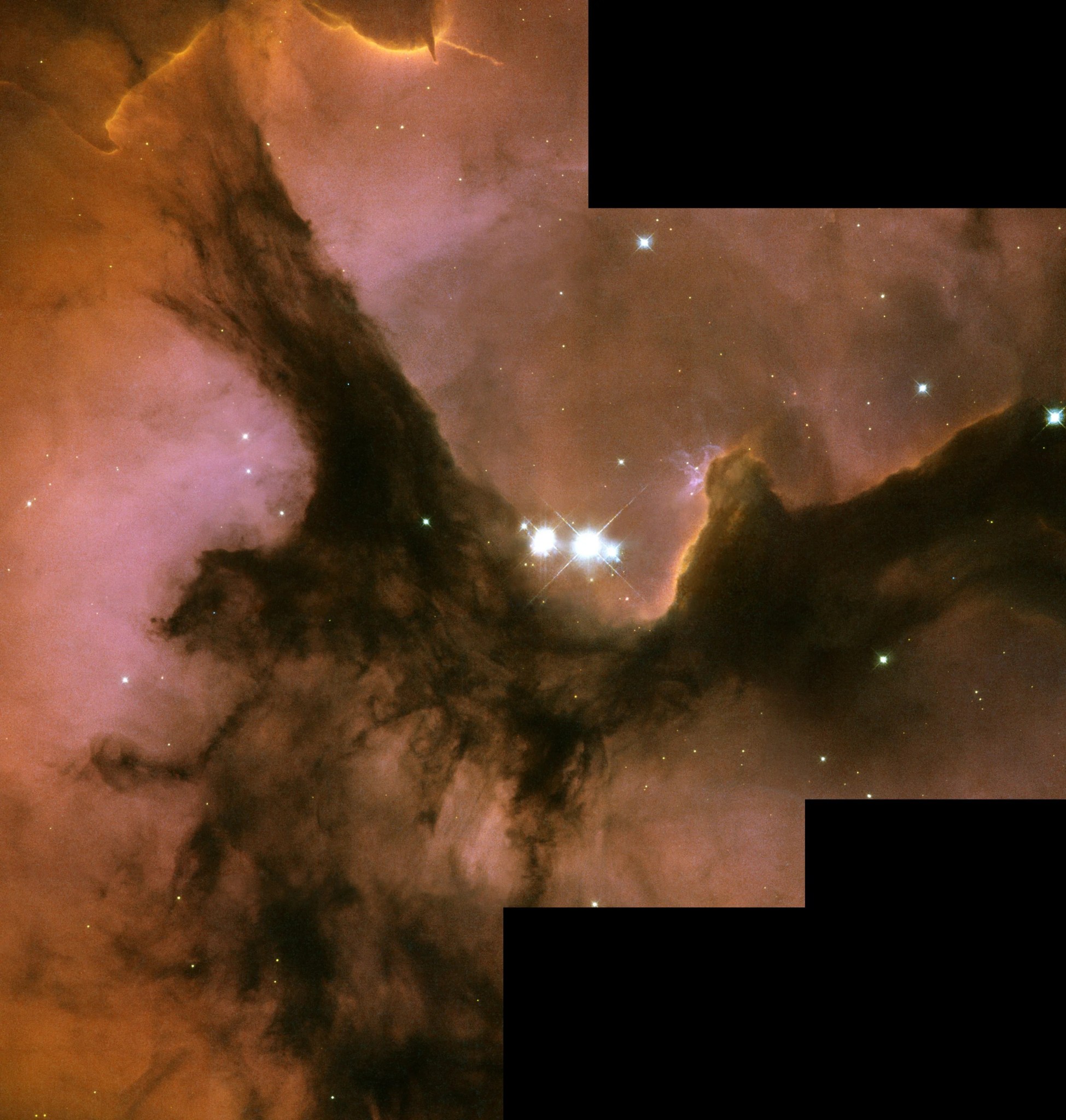Messier 20
Look for Messier 20, better known as the Trifid Nebula, in August.
Distance
9,000 light-years
Apparent Magnitude
6.3
constellation
Sagittarius
object type
Nebula
Discovered by Charles Messier in 1764, M20 is a star-forming nebula located 9,000 light-years away from Earth in the constellation Sagittarius. Also known as the Trifid Nebula, M20 has an apparent magnitude of 6.3 and can be spotted with a small telescope. It is best observed during August.

These images' stair-step appearances result from the design of the camera used to take the exposures. The camera consisted of four light detectors, one of which provided a higher resolution but had a smaller field of view than the other three. Because the detector with the higher resolution did not cover as much area as the others, black regions were left when the images from all four detectors were combined into one picture.
This Hubble image of M20 has been colorized to indicate the presence of oxygen, sulfur and hydrogen.
NASA, Z. Levay and L. Barranger (STScI)
For more information about Hubble’s observations of M20, see:
- New Hubble Image Reveals Details in the Heart of the Trifid Nebula
- The Trifid Nebula: Stellar Sibling Rivalry
Explore Hubble's Messier Catalog
The following pages contain some of Hubble’s best images of Messier objects.

Overview The Messier catalog, begun by astronomer Charles Messier in the 18th Century and revised over the years, includes some…

Better known as the Crab Nebula, Charles Messier originally mistook Messier 1 for Halley’s Comet, which inspired him to create…

Hubble's image of Messier 2 is comprised of visible and infrared wavelengths of light.


































